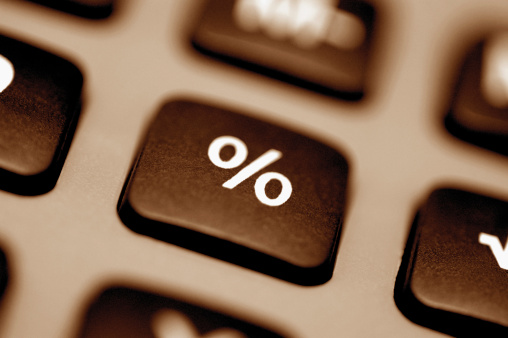Banking, finance, and taxes
Fed Interest Rate Hikes Keep Getting Pushed Out Farther and Farther
Published:
Last Updated:
When interest rates will be raised by the Federal Reserve has been debated for quite some time. Now the argument is becoming more solid that interest rates will not be raised until later in 2015 than previously expected. Weak retail sales figures on Wednesday drove much of the argument, as did a weak outlook by the World Bank. The conundrum for Janet Yellen and Federal Reserve members is that the European Central Bank is widely expected to undergo a further quantitative easing strategy soon with massive asset buying — and the U.S. dollar is already super strong against the euro and other currencies. It is widely expected that raising interest rates would only boost the U.S. dollar even further.
So, what are federal funds futures really saying now? For parts of 2014, the expectation was there that the federal funds rate would be hiked to 0.25% by May of 2015. Then the expectation moved out to June, and recent economic reports and overseas weakness have pushed the expectations out a tad further. The CME’s fed funds futures had indicated that fed funds would be raised to 0.25% in July for much of December and even in the first trading week of 2015.
As of Wednesday, January 14, the fed funds futures no longer indicate that fed funds will be raised to 0.25% in August. Wednesday was the first day since mid-December that the pricing of fed funds futures indicated that the 0.25% fed funds would not be seen until September 2015. On top of that, the pricing was up four basis points in early morning trading to a price just above 99.74 — an indicator that the so-called certainty of a rate hike to 0.25% has been priced in with much lower expectations.
ALSO READ: Why the Dow Could Rise to 19,142 in 2015
Many investors have worried that when interest rates are raised they will rise very fast due to how low they are now and due to how fast the Fed has raised rates in past rate hike cycles. This time may be very different. Keep in mind that even the very weak nations in Europe are borrowing money at rates lower or equal to the United States in 10-year notes.
A further look at fed funds futures shows that fed funds will not hit 0.50% until February of 2016. As recently as December, fed fund futures indicated that 0.50% fed funds could come as soon as October of 2015.
Another issue to consider is that fed funds futures are now not pricing in a 1.00% fed funds rate until October of 2016. Do we need to point out that this is just one month shy of the 2016 presidential election?
One issue that 24/7 Wall St. would remind readers about is that fed funds futures are not perfect in their predictions. Still, it is real world money that is being bet by banks and interest rate market participants.
World Bank noted an expectation for continued low global interest rates and the possibility of financial market volatility as interest rates in major economies rise on varying timelines. The lower oil price, which is expected to persist through 2015, is lowering inflation worldwide and is likely to delay interest rate hikes in rich countries. The World Bank’s projection for global GDP growth now is 3.0% in 2015, 3.3% in 2016 and 3.2% in 2017.
ALSO READ: World Bank Slashes Global Growth Forecast
A snapshot of fed funds futures from the CME website has been included below.
If you’re like many Americans and keep your money ‘safe’ in a checking or savings account, think again. The average yield on a savings account is a paltry .4% today, and inflation is much higher. Checking accounts are even worse.
Every day you don’t move to a high-yield savings account that beats inflation, you lose more and more value.
But there is good news. To win qualified customers, some accounts are paying 9-10x this national average. That’s an incredible way to keep your money safe, and get paid at the same time. Our top pick for high yield savings accounts includes other one time cash bonuses, and is FDIC insured.
Click here to see how much more you could be earning on your savings today. It takes just a few minutes and your money could be working for you.
Thank you for reading! Have some feedback for us?
Contact the 24/7 Wall St. editorial team.